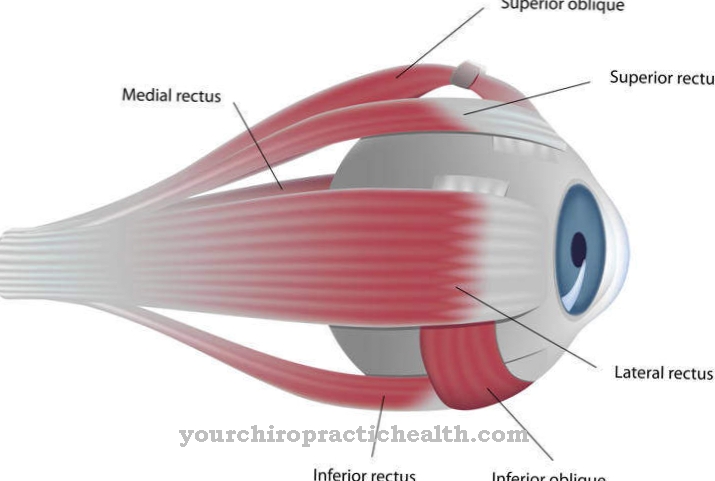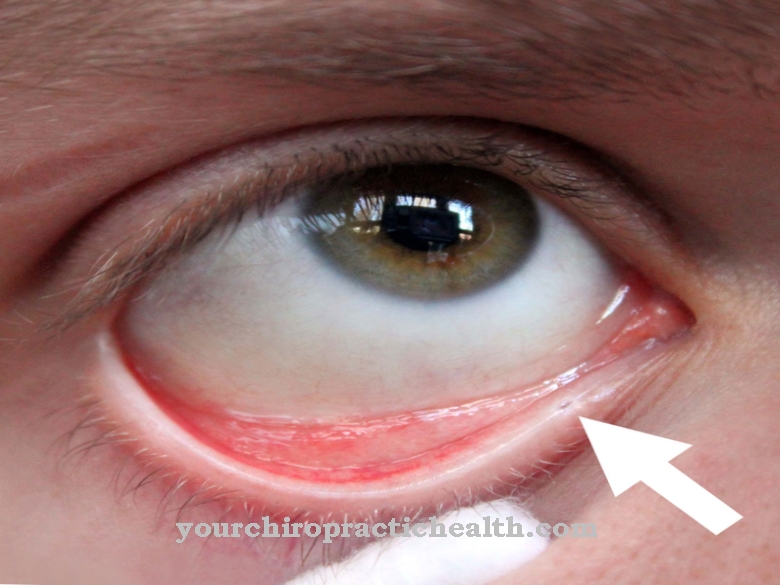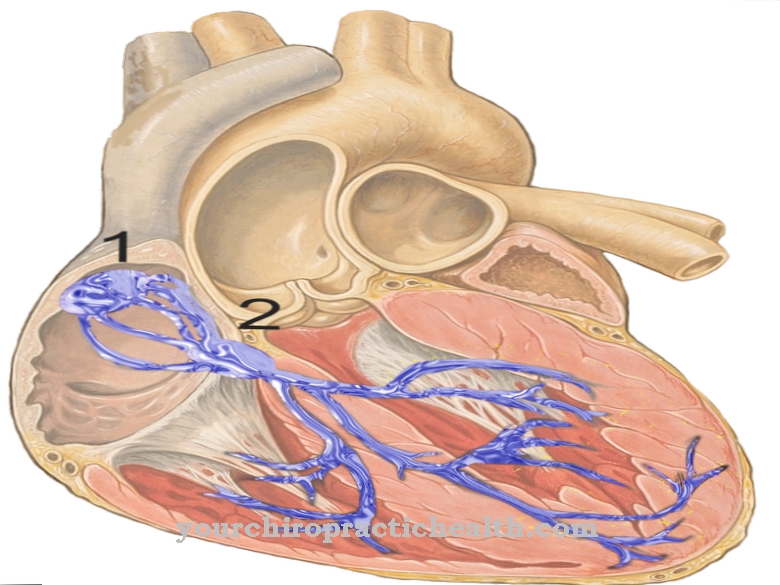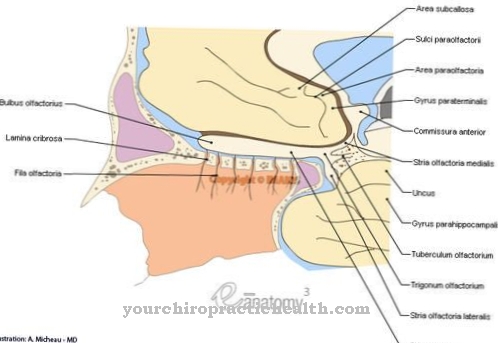What is the cerebral cortex?
The human cerebrum comprises around 85 percent of the total brain mass and is the youngest part of the brain in evolutionary terms. The one above Cerebral cortex takes on a variety of tasks of human sensory perception and, due to its large area, takes up about half of the entire brain volume. The cortex is also known as gray matter due to the large number of nerve cells that turn it into a reddish-brown to gray color.
The number of nerve cells in the cerebral cortex ranges from 19 to 23 billion, depending on the size and gender of the person. The nerve cells of the cerebral cortex process coded signals from the individual sensory organs of the body and convert them into targeted impressions. The cerebral cortex is therefore an essential component for our sensory perception. Some scientists also believe that they can locate the seat of consciousness in the anterior cerebral cortex. However, like the riddle of consciousness, this research hypothesis is itself highly controversial.
Anatomy & structure
The cerebrum, divided into two mirror-like halves, the so-called hemispheres, stretches from the forehead area over the sides to the back of the head and is located over the thalamus, hypothalamus, brain stem and cerebellum. The cerebral cortex enveloping the cerebrum is a layer two to five millimeters thick, lying in numerous folds and twists. This folding enables a maximum expansion of the surface in the limited space of the skull.
In humans, the area of the cortex averages 1,800 square centimeters. The characteristic structure of the cerebral cortex developed slowly over time in the evolution of mammals.One of the oldest parts is the palaeocortex, which is responsible for the perception of smells, which means old cortex. The so-called archicortex, which is often counted as part of the limbic system and influences emotional reactions, as well as the hippocampus, which is crucial for memory, developed early in history.
However, these old parts of the cerebral cortex only make up a tenth of the entire cortex. The remaining 90 percent is called the neocortex, i.e. the new cortex. Analogous to the higher development of the sensory organs, such as the skin and mucous membranes, muscles, taste organs and inner ear, the neocortex became increasingly complex in structure and structure.
The entire cerebral cortex can also be roughly divided into four to six lobes, so-called lobi, the borders of which form the most distinctive furrows.
Functions & tasks
The different lobes of the cerebral cortex are assigned different areas of responsibility. So is the temporal or temporal lobe (Temporal lobe) responsible for hearing, smell and speech. The parietal lobe or parietal lobe (Parietal lobe) converts signals for taste perception and the sense of touch. The posterior lobe or occipital lobe (Occipital lobe) becomes active in vision and the frontal lobe (Frontal lobe) is responsible for movement, thought processes and language. In many cases, the cerebral cortex is also divided into two further lobes: the so-called island lobes (Insular lobe) and the limbic lobes (Limbic lobe). The former takes on the processing of chemical stimuli from smell and taste, as well as crucial tasks in the sense of balance. The latter is crucial in the development of emotions and instinctual behavior and controls the release of endorphins, which can have a pain-relieving and euphoric effect.In the cortex, the signals from the sensory organs are processed into related impressions and perceptions of the environment with the help of upstream brain regions. Most of the incoming signals from the sensory organs are switched over by the nerve cells in the thalamus and forwarded to the relevant “higher” region of the cortex for “translation” into a coherent perception.
The cerebral cortex is also responsible for storing information, i.e. it forms the biological basis of our memory. Mind and thinking, goal-oriented action and the creation of feelings, all are products of the processes in our cerebral cortex.
You can find your medication here
➔ Medicines against memory disorders and forgetfulnessIllnesses & ailments
Our sensory perception is subject to a complex interplay between the cerebral cortex and sensory organs. If the area in the cortex responsible for a particular sensory organ is damaged, sensory perception may be disturbed or completely absent despite a functioning sense organ. For example, if the visual center in the cerebral cortex is injured, blindness can occur despite fully functional eyes.
If certain higher-level areas of the cortex are affected, humans can see, but cannot convert what they see into useful information. Because of local disturbances, for example, he is unable to recognize or distinguish faces. If the lowest turn of the frontal lobe is damaged, there may be limitations in speech ability, but often not in speech understanding. Injuries to the anterior part of the frontal lobe can cause personality changes or reduce intelligence.
A widespread and unfortunately not yet curable disease that affects the cerebral cortex is Alzheimer's. In Alzheimer's patients, protein proteins, so-called neurofibrils, are deposited in the nerve cells of the cortex. They cause disruption of transport processes in the affected cells, which lead to the death of the nerve cells as the disease progresses.
Initially, the areas responsible for memory and cognitive abilities are usually affected, whereby Alzheimer's is often noticeable through frequent forgetting. Damage to the cerebral cortex can vary greatly in severity and symptoms due to the high complexity and sensitivity of the brain and is an ongoing subject of medical research.













.jpg)

.jpg)
.jpg)











.jpg)